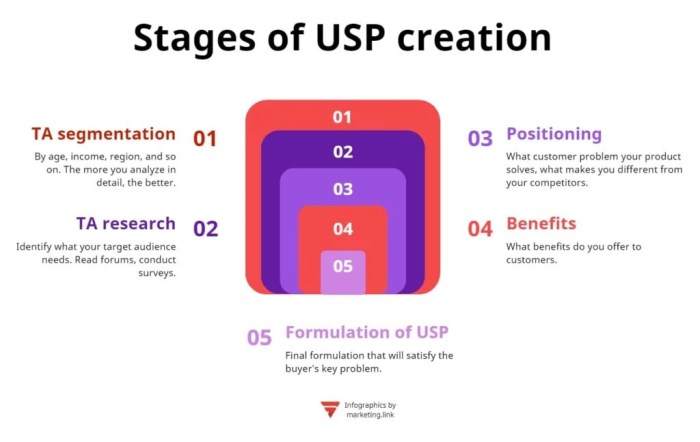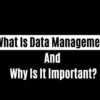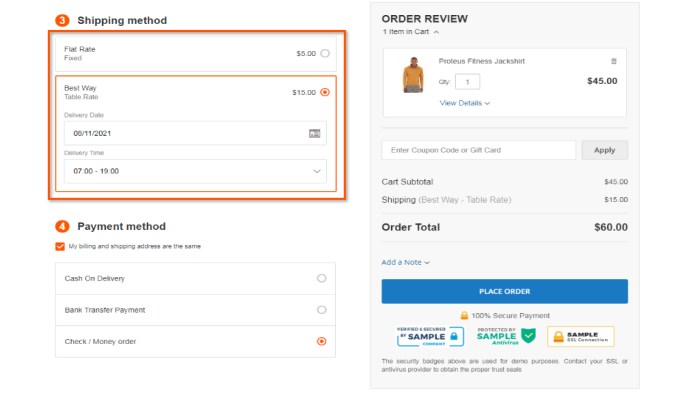Cultivating a powerful differentiator is crucial for any business aiming to stand out in a crowded market. This isn’t just about adding a feature; it’s about understanding your target audience, identifying unmet needs, and crafting a unique narrative that resonates with them. This exploration delves into the process, from defining your differentiator to measuring its impact and adapting to market changes.
We’ll uncover strategies for identifying potential sources, crafting compelling narratives, and maintaining your competitive edge.
We’ll analyze the importance of understanding your target audience and how it directly impacts the effectiveness of your differentiator. We’ll examine real-world case studies, both successes and failures, to learn from their experiences and identify best practices. Finally, we’ll explore visualizing your differentiator, using visuals and diagrams to help you clearly articulate and communicate your unique value proposition.
Defining a Differentiator
A powerful differentiator in business is a unique aspect of a product, service, or company that sets it apart from competitors. It’s not just about being better; it’s about being
- distinct* and
- valuable* in the eyes of the target audience. A strong differentiator creates a competitive advantage, attracting customers, driving loyalty, and ultimately, increasing profitability. It’s the key to standing out in a crowded marketplace.
Differentiators aren’t static; they need constant refinement and adaptation to evolving market trends and customer preferences. Companies must carefully consider their differentiators to ensure they align with their overall value proposition and effectively communicate their unique strengths.
Successful Differentiator Examples
Companies across various industries have successfully leveraged differentiators to achieve market leadership. For instance, Apple’s sleek design and user-friendly interface have been significant differentiators. Similarly, Southwest Airlines’ exceptional customer service and low-cost model have created a unique value proposition. These examples demonstrate how different approaches can yield strong differentiators.
Framework for Identifying Potential Differentiators
A framework for identifying potential differentiators involves a systematic approach. Start by analyzing the company’s core competencies and strengths. What unique resources or capabilities does the company possess? Next, examine the competitive landscape. What are the key differentiators of competitors?
What gaps exist? Finally, analyze the target audience. What are their needs and desires? What problems can the company solve uniquely? This structured approach helps pinpoint potential differentiators.
Importance of Understanding Target Audiences
Understanding the target audience is crucial in establishing a successful differentiator. Differentiation is not about what the companythinks* is unique, but rather what the target audience perceives as valuable. Market research and customer feedback are essential tools to gain insights into the audience’s preferences, motivations, and pain points. This allows for the development of a differentiator that truly resonates with the target market.
Connection Between Differentiators and Value Proposition
A strong differentiator directly supports a company’s overall value proposition. The differentiator highlights the unique benefits and value offered to customers, thus justifying the price and fostering customer loyalty. A clear and compelling value proposition, anchored by a strong differentiator, positions the company favorably in the marketplace.
Types of Differentiators
A company can differentiate itself through various avenues. This table Artikels some common types of differentiators:
| Type of Differentiator | Description |
|---|---|
| Product Features | Unique or superior product characteristics that distinguish it from competitors. |
| Customer Service | Exceptional support and interactions with customers, creating a positive experience. |
| Brand Image | A strong and recognizable brand identity that evokes specific emotions and associations. |
| Innovation | Introducing new technologies, processes, or approaches that set the company apart. |
| Cost Leadership | Providing products or services at a lower cost than competitors. |
Identifying Potential Sources: Cultivating A Powerful Differentiator

Unearthing a potent differentiator requires a deep dive into both internal capabilities and external market opportunities. This involves scrutinizing existing strengths, exploring potential market gaps, and meticulously analyzing competitive landscapes. A robust understanding of these elements is crucial for crafting a unique value proposition that resonates with customers.Internal resources often hold the key to a powerful differentiator. Leveraging existing strengths, whether in expertise, technology, or processes, can unlock innovative solutions and create a distinct competitive edge.
Furthermore, recognizing and capitalizing on existing customer relationships or a strong brand identity can provide a solid foundation for differentiation.
Evaluating Internal Resources
Identifying internal strengths is the first step in building a powerful differentiator. This involves a comprehensive assessment of existing resources, examining expertise, processes, technology, and infrastructure. A detailed SWOT analysis can help in this evaluation. For instance, a company with a highly skilled engineering team could leverage this talent to create innovative products or processes. Similarly, a company with a strong customer support network can differentiate itself through exceptional service.
Leveraging Existing Strengths
Transforming internal strengths into a powerful differentiator requires strategic planning. A strong understanding of the company’s value proposition is paramount. Consider how existing strengths can be adapted or combined to create a new, more compelling offering. For example, a company with strong logistics capabilities might use them to create a faster delivery system, thereby offering a superior customer experience.
This might involve streamlining existing processes, investing in new technologies, or simply communicating existing strengths more effectively to the target market.
Identifying Market Gaps
Market research is crucial for identifying potential gaps that a novel differentiator can fill. This involves analyzing customer needs and desires, evaluating competitor offerings, and identifying unmet demands. A gap might be a specific product feature that competitors overlook, or a previously underserved segment of the market. Understanding customer pain points can lead to the development of unique solutions that create a competitive edge.
For example, a market lacking a sustainable transportation solution could be a fertile ground for a new differentiator.
Market Research for Potential Differentiators
Market research provides invaluable insights into identifying potential differentiators. It helps to understand the needs and preferences of the target audience, evaluate competitor offerings, and identify unmet demands. Analyzing market trends and understanding customer preferences are critical for identifying a strong differentiator. A combination of qualitative and quantitative research methods is often necessary for a complete picture.
Focus groups, surveys, and competitor analysis can provide insights into the market’s needs.
Different Approaches to Creating a Competitive Edge
Numerous approaches exist for creating a competitive edge. These include cost leadership, differentiation, focus, and niche strategies. Each approach has its own strengths and weaknesses, and the best approach depends on the specific industry and the company’s resources. Understanding these different approaches can guide strategic decision-making for developing a unique value proposition. A company aiming for a cost leadership strategy might focus on streamlining operations, while a company pursuing a differentiation strategy would emphasize unique product features.
Steps in Market Analysis for a Differentiator
| Step | Description |
|---|---|
| 1. Define Objectives | Clearly state the purpose of the market analysis. |
| 2. Target Market Identification | Identify the specific customer segments to focus on. |
| 3. Competitive Analysis | Analyze the offerings and strategies of competitors. |
| 4. Data Collection | Gather data through surveys, interviews, and other methods. |
| 5. Data Analysis | Interpret the collected data to identify trends and insights. |
| 6. Gap Identification | Identify unmet customer needs and market gaps. |
| 7. Potential Differentiators | Develop potential differentiators based on the analysis. |
| 8. Validation | Validate potential differentiators with the target market. |
Crafting a Compelling Narrative
Crafting a compelling narrative is crucial for effectively communicating your product or service’s differentiator. It’s not just about listing features; it’s about weaving a story that resonates with your target audience and showcases thewhy* behind your unique value proposition. This narrative must clearly articulate the problem your product solves, the specific benefit it offers, and how it stands out from the competition.
A compelling narrative fosters trust and encourages customers to connect with your brand on a deeper level.A well-crafted narrative goes beyond simply stating facts. It paints a picture of the experience your product or service delivers, emphasizing the emotional impact it has on the customer. This emotional connection is often the key differentiator in a crowded marketplace. It’s about translating the technical aspects of your product into a relatable story that speaks to the customer’s needs and aspirations.
Articulating Your Differentiator Concisely
Effective communication of your differentiator relies on clarity and conciseness. Avoid jargon or technical terms that might alienate your audience. Instead, use simple, everyday language to explain the unique value your product or service provides. Focus on the benefits, not just the features. A concise and impactful statement, outlining the core value proposition, is vital.
Examples of Compelling Narratives
Several compelling narratives illustrate the power of highlighting unique value propositions. Consider a fitness tracker that focuses on personalized insights and motivation. The narrative could center around the user’s journey of achieving their fitness goals with the tracker’s support. Another example is a subscription box service tailored to specific interests. The narrative could emphasize the curated selection and the joy of discovery it brings to customers.
In both cases, the narrative emphasizes the emotional benefit derived from the product, not just its technical features.
Crafting a unique selling proposition is key to standing out. Knowing how to write compelling copy that highlights your differentiator is crucial. For example, mastering the art of persuasive language and clear communication, like how to write copy , will help you articulate what sets you apart. Ultimately, this strong copy will solidify your unique position and resonate with your target audience, further boosting your powerful differentiator.
Storytelling for Emphasis
Storytelling plays a vital role in emphasizing a differentiator. By weaving a narrative around your product or service, you create an emotional connection with the audience. This approach allows customers to visualize how your product will solve their problems and improve their lives. This is more effective than simply listing features, as it resonates with the customer on a personal level.
For instance, a story about how a software program helped a small business owner streamline their operations, saving them valuable time and resources, is far more impactful than a list of its technical specifications.
Standing out in a competitive field like personal injury law requires a powerful differentiator. Focusing on effective SEO strategies, like the ones detailed in this helpful guide on 8 personal injury lawyer marketing tips to dominate your SEO , can significantly boost your online presence. Ultimately, a strong online profile built on these principles will help cultivate that crucial differentiator that sets you apart from the competition.
Showcasing Benefits to Customers
Highlighting the benefits of your differentiator is paramount. Focus on how it solves problems, saves time, improves efficiency, or enhances customer experience. For example, a cloud storage service could emphasize its ability to back up critical data and ensure business continuity. Explain how the product will impact the user’s daily routine or professional life.
Communicating with Different Target Audiences
Effective communication of your differentiator necessitates tailoring your message to specific target audiences. Understanding the needs, motivations, and values of different segments is key. For example, a product aimed at environmentally conscious consumers might use a different narrative than one targeted at cost-conscious buyers.
Cultivating a powerful differentiator in today’s digital landscape requires a strategic approach. Understanding how search engines rank websites, like mastering Core Web Vitals, is crucial. Check out the pure SEO guide to core web vitals for a deep dive into this critical area. Ultimately, focusing on user experience and technical optimization, like those covered in the guide, are essential components in building a truly unique and valuable online presence.
Comparing Communication Strategies, Cultivating a powerful differentiator
| Communication Strategy | Target Audience Focus | Key Messaging Approach | Example |
|---|---|---|---|
| Emotional Storytelling | Individuals seeking personal growth or fulfillment | Focus on emotional impact and personal connection | A fitness app narrative emphasizing self-improvement and overcoming challenges. |
| Problem-Solution Focus | Individuals seeking practical solutions to specific problems | Highlight the problem and how the product/service solves it effectively | A productivity tool highlighting the ease and speed of task completion. |
| Value-Driven Approach | Individuals valuing efficiency and cost-effectiveness | Emphasize the tangible value proposition and return on investment. | A cloud storage service emphasizing data security and cost savings. |
Measuring and Maintaining Differentiation
Cultivating a powerful differentiator is a continuous process, not a one-time event. Once a differentiator is chosen and communicated effectively, the real work begins: measuring its impact and adapting it to stay ahead of the curve. This phase requires a proactive approach to monitoring customer feedback, embracing innovation, and adapting the differentiator to remain relevant and valuable. A robust system for tracking effectiveness is crucial to ensure the chosen differentiator is not only perceived as valuable by customers but also consistently delivers on its promise.Successfully maintaining a powerful differentiator demands a flexible and adaptive strategy.
A rigid approach risks becoming irrelevant as customer needs and market trends evolve. A dynamic strategy that actively monitors performance and adjusts the differentiator as needed ensures long-term success. Continuous innovation and adaptation are vital in ensuring that the differentiator remains a source of competitive advantage.
Tracking Differentiator Effectiveness
Monitoring the impact of a chosen differentiator involves a multifaceted approach. Quantitative and qualitative data sources are both essential to provide a comprehensive view of the differentiator’s effectiveness. Tracking key performance indicators (KPIs) related to the differentiator’s specific function is crucial for identifying trends and patterns. These KPIs should be directly linked to customer experience and business outcomes.
Customer Feedback and Adjustment
Regularly soliciting customer feedback is essential for understanding how the differentiator is perceived and experienced. Implementing feedback mechanisms, such as surveys, focus groups, and social media monitoring, allows for a direct line of communication with customers. This feedback can be used to identify areas where the differentiator excels and where improvements can be made. Adjusting the differentiator based on customer feedback is not just about reacting to complaints; it’s about proactively refining the differentiator to better meet evolving customer needs and preferences.
This proactive approach demonstrates a commitment to customer satisfaction and builds stronger customer relationships.
Continuous Innovation for Maintaining Differentiation
Continuous innovation is paramount to maintaining a powerful differentiator. The market is constantly changing, and customers’ expectations are evolving. A static differentiator risks becoming obsolete and losing its competitive edge. Staying ahead of the curve requires a commitment to research, development, and exploration of new ideas and technologies. This includes exploring new technologies, processes, or approaches that could enhance or augment the differentiator.
Adapting and evolving the differentiator to remain competitive and relevant to customers is key to long-term success. Companies that fail to adapt often find their differentiators become their liabilities.
Examples of Successful Differentiation Adaptation
Numerous companies have successfully adapted and evolved their differentiators. For instance, Apple, initially known for its innovative personal computers, expanded its product line to include consumer electronics like iPods, iPhones, and iPads. This diversification of products allowed them to capture a wider market segment and remain a dominant force in the technology industry. Similarly, Amazon, initially a book retailer, transformed into a global e-commerce giant through its focus on customer convenience, logistics, and innovation in online shopping.
These examples demonstrate that adapting and evolving a differentiator can be a powerful engine for growth and market leadership.
Structured Approach to Regular Review and Refinement
A structured approach to regularly reviewing and refining the differentiator is essential for long-term success. This includes a periodic review process, ideally quarterly or annually, involving key stakeholders. The review should encompass an analysis of market trends, competitor activities, and customer feedback. This structured review process should identify any gaps, shortcomings, or areas for improvement. A thorough review helps maintain a proactive approach to ensuring the differentiator remains relevant and effective.
Key Metrics for Measuring Differentiator Impact
| Metric | Description | Measurement Method |
|---|---|---|
| Customer Satisfaction Score (CSAT) | Measures customer satisfaction with the differentiator | Customer surveys, feedback forms, online reviews |
| Customer Retention Rate | Measures the percentage of customers who remain loyal to the company | Tracking customer churn rates, analyzing customer lifetime value |
| Market Share | Measures the company’s proportion of the total market | Industry reports, market analysis data |
| Sales Growth | Measures the growth in sales attributable to the differentiator | Sales data analysis, comparing to previous periods |
| Customer Acquisition Cost (CAC) | Measures the cost of acquiring a new customer | Tracking marketing spend, dividing by the number of new customers acquired |
Case Studies and Real-World Examples

Crafting a powerful differentiator isn’t just about theory; it’s about observing successful implementations and understanding the pitfalls. Real-world examples offer invaluable insights into what works and what doesn’t, allowing us to refine our strategies and increase our chances of success. This section delves into practical applications, highlighting companies that effectively leveraged a differentiator and those that struggled, ultimately leading to a more nuanced understanding of the process.By analyzing both successes and failures, we can identify crucial elements for developing and maintaining a lasting competitive advantage.
This approach allows for a deeper comprehension of the intricacies involved in differentiating oneself in the marketplace.
A Successful Differentiator: Patagonia’s Commitment to Environmental Sustainability
Patagonia’s commitment to environmental sustainability is a powerful differentiator. Their dedication extends beyond marketing slogans; it’s woven into the core of their business practices. They prioritize ethical sourcing, responsible manufacturing, and product durability, all contributing to a unique brand identity. This commitment has resonated with environmentally conscious consumers, creating a loyal customer base. Patagonia’s approach is further solidified by their transparent communication about their environmental initiatives, fostering trust and building a strong brand reputation.
The company actively engages in environmental activism, further emphasizing their dedication.
- Ethical Sourcing: Patagonia prioritizes fair wages, safe working conditions, and environmentally friendly materials for its products.
- Product Durability: The company focuses on crafting durable clothing, reducing the need for frequent replacements, minimizing environmental impact.
- Transparency and Activism: Patagonia actively communicates its environmental initiatives and engages in activism, reinforcing its commitment to sustainability.
A Struggle to Establish a Meaningful Differentiator: A Generic Tech Startup
A common pitfall for startups is failing to identify a truly compelling differentiator. A generic tech startup might offer a basic product or service without a clear competitive edge. Without a unique value proposition, the startup struggles to stand out in a crowded market. Lack of brand identity, a poorly defined target audience, and a failure to communicate a unique selling proposition all contribute to this challenge.
- Lack of Brand Identity: A generic startup often lacks a strong brand identity, making it difficult for consumers to recognize and connect with the company.
- Poorly Defined Target Audience: The startup might not have a well-defined target audience, making it hard to tailor products and marketing to their needs.
- Failure to Communicate a Unique Selling Proposition: The startup fails to articulate a compelling reason for consumers to choose their product or service over competitors.
Comparative Analysis of Successful and Unsuccessful Differentiators
| Feature | Patagonia (Successful) | Generic Tech Startup (Unsuccessful) |
|---|---|---|
| Core Differentiator | Environmental Sustainability | Generic Product/Service |
| Brand Identity | Strong, Eco-Conscious | Weak, Unmemorable |
| Target Audience | Environmentally Conscious Consumers | Undetermined or Broad |
| Marketing Strategy | Aligned with Values | Generic, Unfocused |
| Customer Loyalty | High | Low |
Evolution of a Differentiator: The Rise of Subscription Boxes
The subscription box model, once a niche offering, has evolved significantly. Initially, many subscription boxes focused on a single theme, like beauty products or gourmet snacks. Now, there’s a wider range of options and specialization. This evolution shows how a differentiator can adapt and innovate to stay relevant. The rise of curated boxes, featuring diverse and often unexpected products, demonstrates the importance of offering value and variety to customers.
Visualizing the Differentiator
Crafting a powerful differentiator isn’t just about defining it; it’s about making it tangible and understandable. Visualizations help teams grasp the concept, communicate its value, and ultimately, execute it effectively. By translating abstract ideas into concrete images, we can more readily identify potential pitfalls and refine strategies for success.Visualizations help in clarifying the essence of the differentiator, facilitating internal communication and aligning the team toward a shared understanding.
This process enhances clarity and facilitates better decision-making.
Illustrative Diagram of a Powerful Differentiator
A powerful differentiator, much like a unique selling proposition (USP), can be visualized as a distinctive feature or advantage that sets a product or service apart from competitors. Consider a company offering personalized learning experiences. Their differentiator could be depicted as a branching tree diagram. The trunk represents the core learning platform, while the branches represent tailored learning paths for different user needs and skill levels.
Each branch could have distinct sub-branches indicating specialized courses, interactive exercises, or personalized feedback loops. This visual clarifies the depth and breadth of the individualized approach.
Process Flowchart for Implementing a Differentiator
Implementing a differentiator requires a structured approach. A flowchart can visually depict the steps involved, making the process more transparent and manageable. The flowchart would begin with identifying the target customer need and pain point. This is followed by brainstorming potential differentiators. Subsequently, it would involve validating the chosen differentiator, developing the implementation strategy, and finally, measuring and monitoring the results.
Each step could be represented by a box or oval, connected by arrows indicating the sequential order.
Visual Metaphor for the Differentiator’s Essence
A potent visual metaphor for a differentiator is a “beacon.” This beacon, representing the core value proposition, stands out in a sea of competitors. The light of the beacon illuminates the unique value offered to the customer, guiding them toward a solution. The beacon, by its nature, signifies a clear path and a focused approach to meeting a specific customer need.
Infographic of the Competitive Landscape and Differentiator’s Position
A comprehensive infographic depicting the competitive landscape should show the current market players and their positions. Using a horizontal axis for the price point and a vertical axis for the quality/features, a scatter plot could illustrate each competitor’s current standing. The company’s differentiator would be visually highlighted, positioning it in a distinct area of the graph, perhaps offering a higher level of quality at a slightly premium price.
This representation quickly communicates the differentiator’s value proposition relative to the competition. Color-coding different feature categories would enhance the infographic’s clarity.
Visual Representation of Customer Need/Pain Point Addressed by the Differentiator
Illustrating how the differentiator addresses a specific customer need or pain point can be achieved through a before-and-after scenario. Imagine a customer struggling with time management. A visual could show a cluttered, chaotic schedule (the “before”) with overlapping tasks and deadlines. The “after” would depict a well-organized schedule, highlighting how the differentiator, perhaps a time-management app, has streamlined the process and reduced stress.
This contrast visually demonstrates the problem and the solution.
Conclusion
In conclusion, cultivating a powerful differentiator isn’t a one-time event but an ongoing process of adaptation and refinement. By understanding your target audience, identifying potential gaps in the market, and consistently measuring the impact of your differentiator, you can build a sustainable competitive advantage. Remember, a strong differentiator isn’t just about what you offer, but how you communicate its value to your customers.
This continuous effort will position your business for long-term success in a dynamic market.






